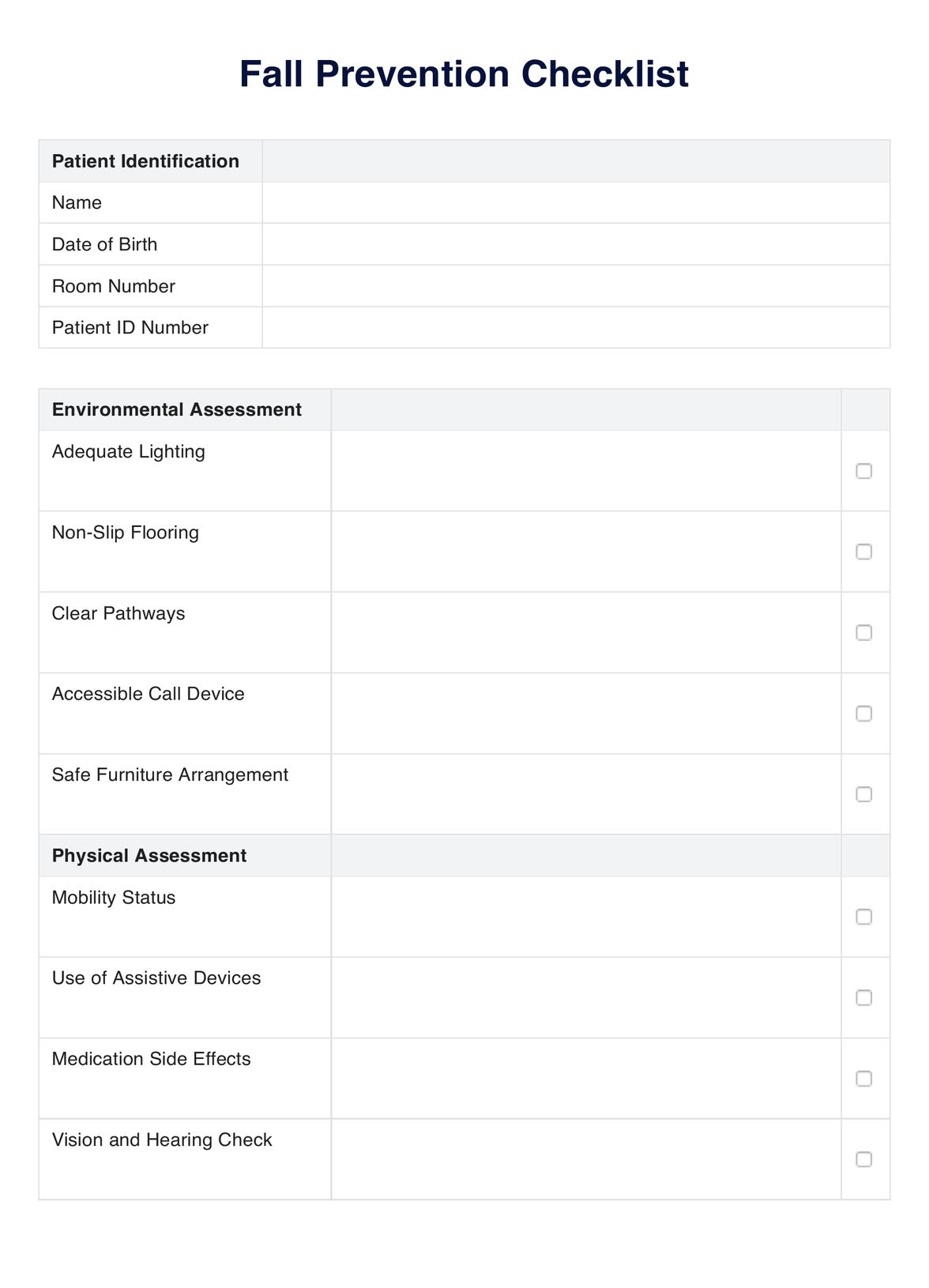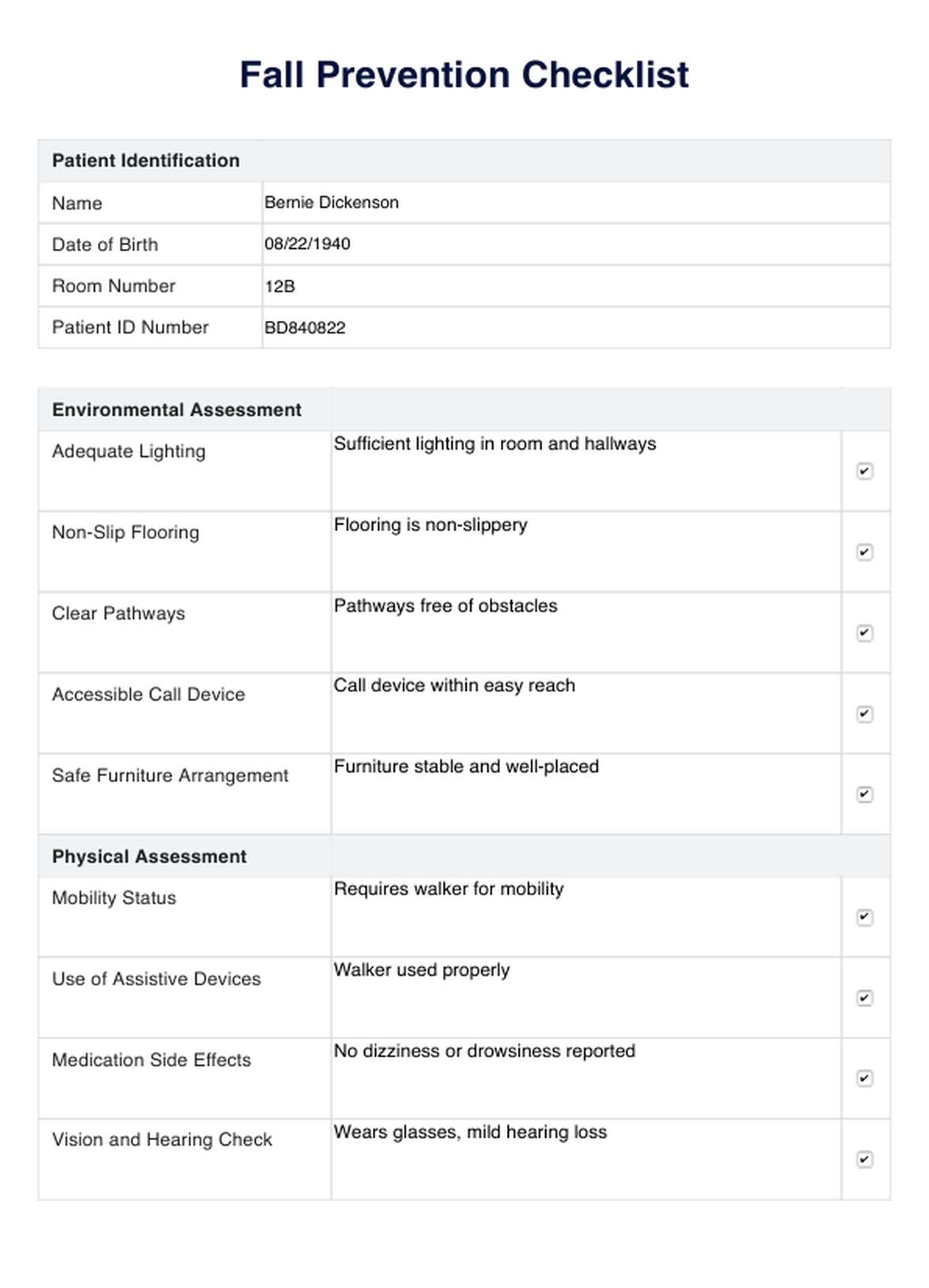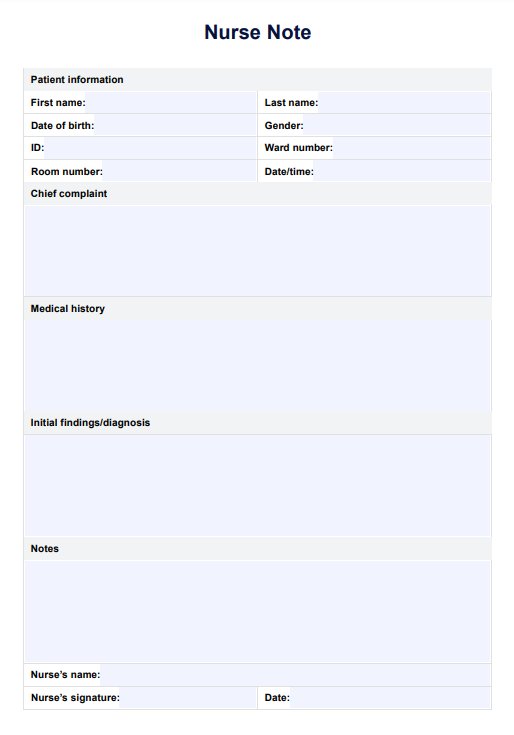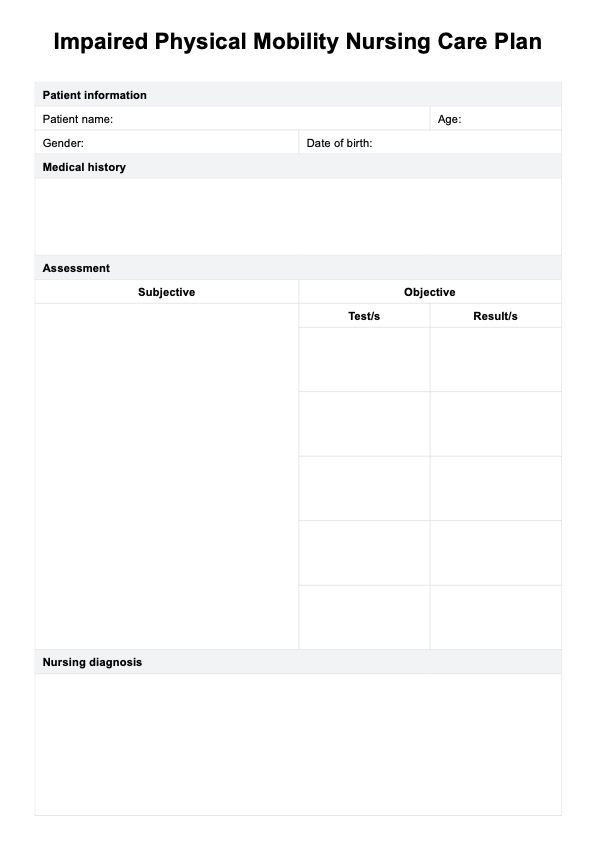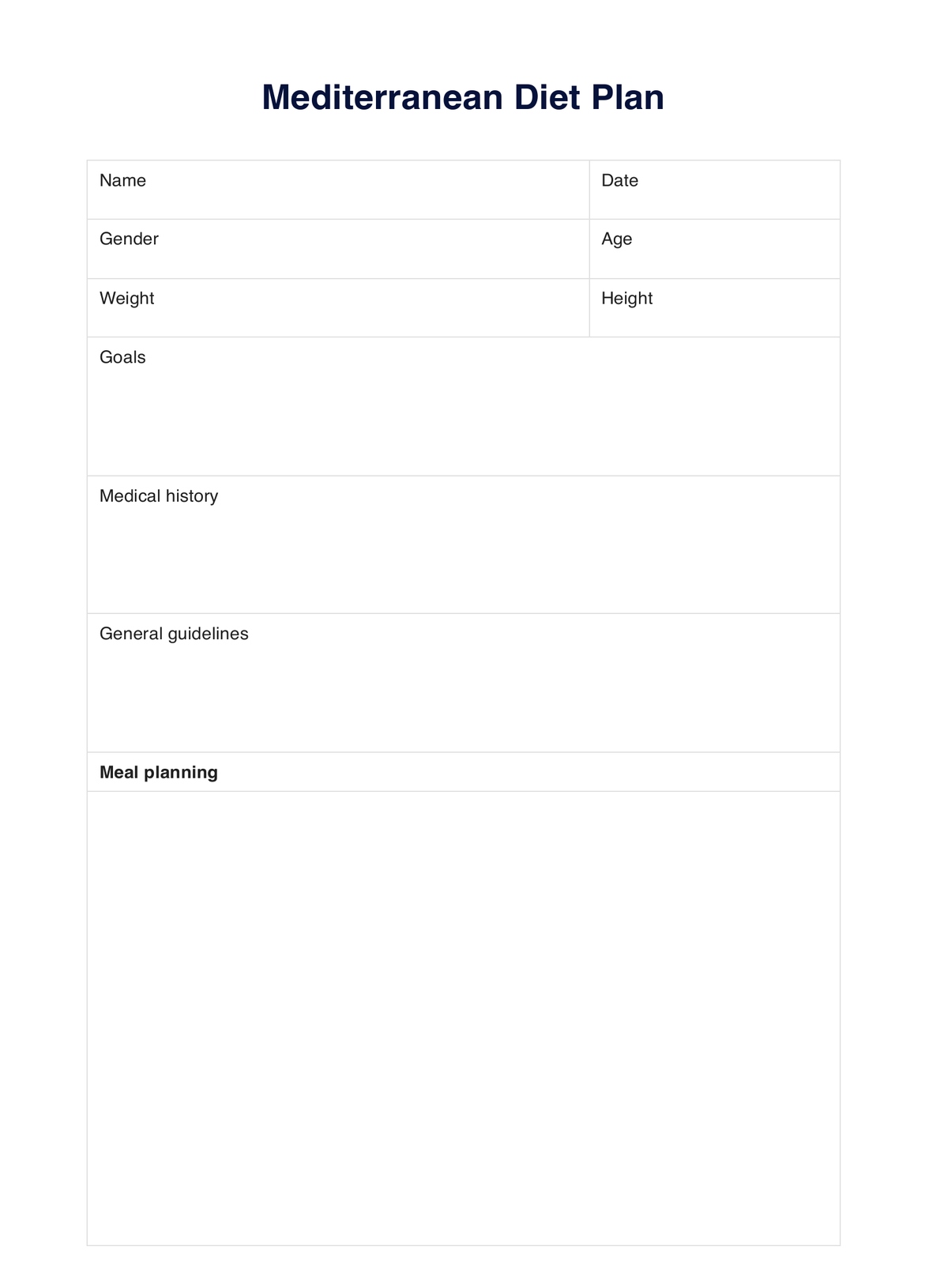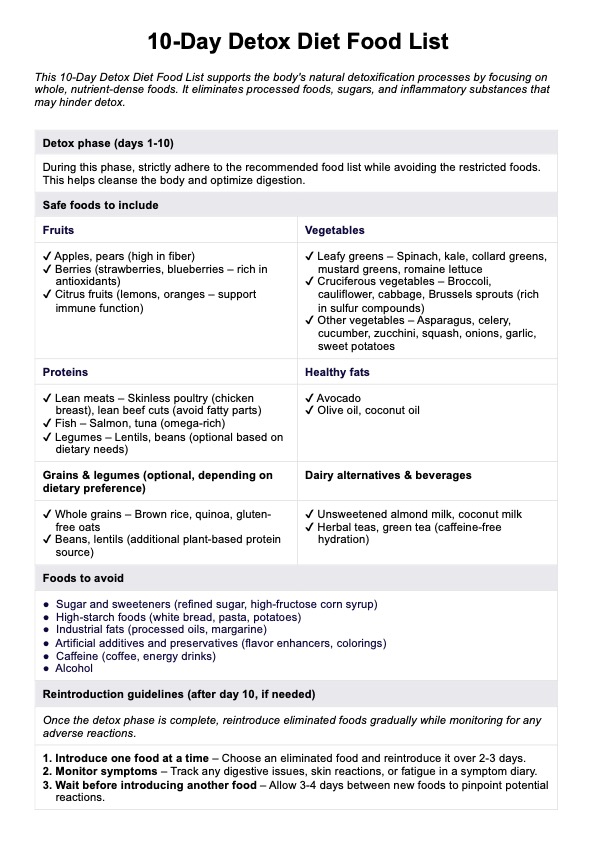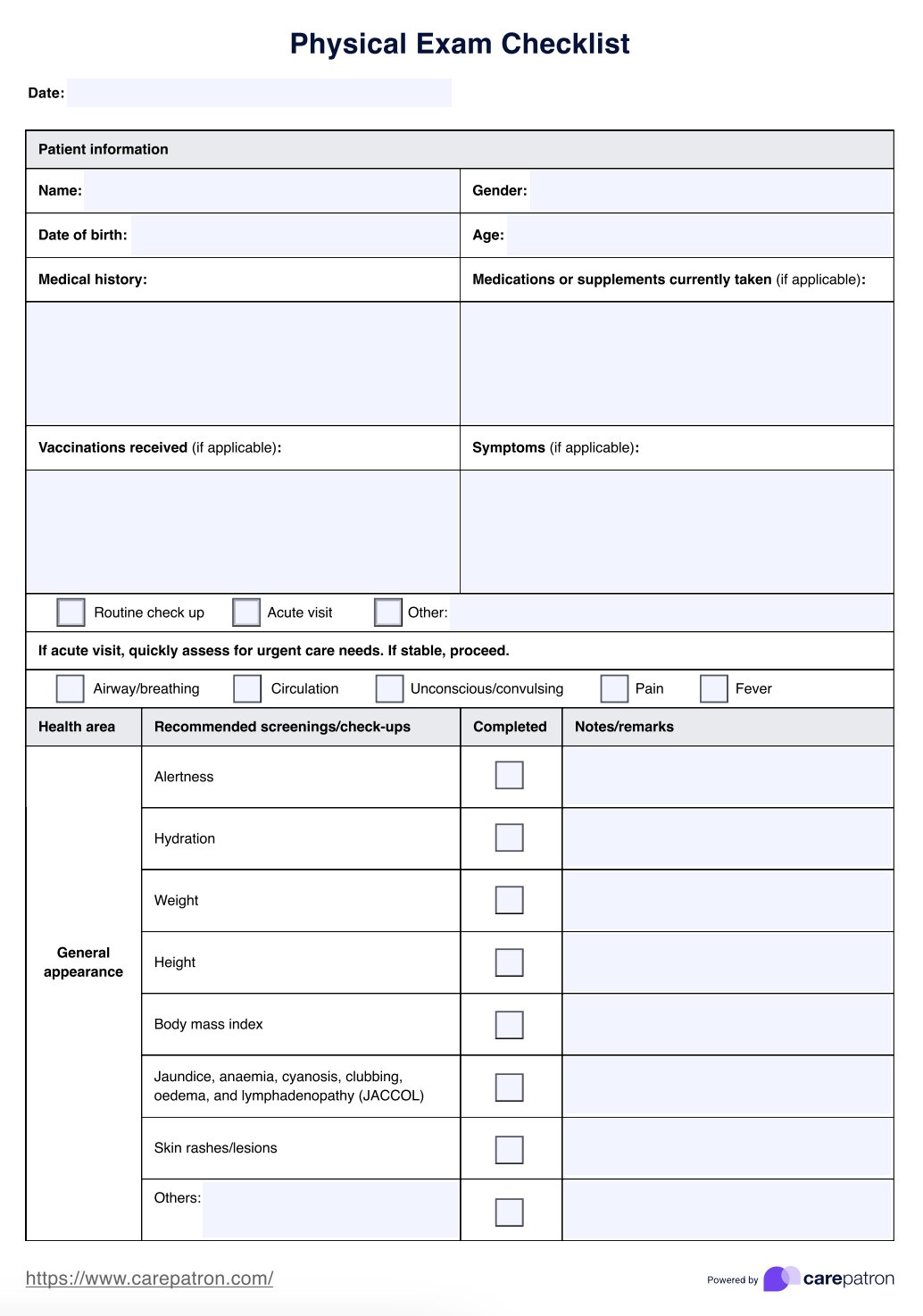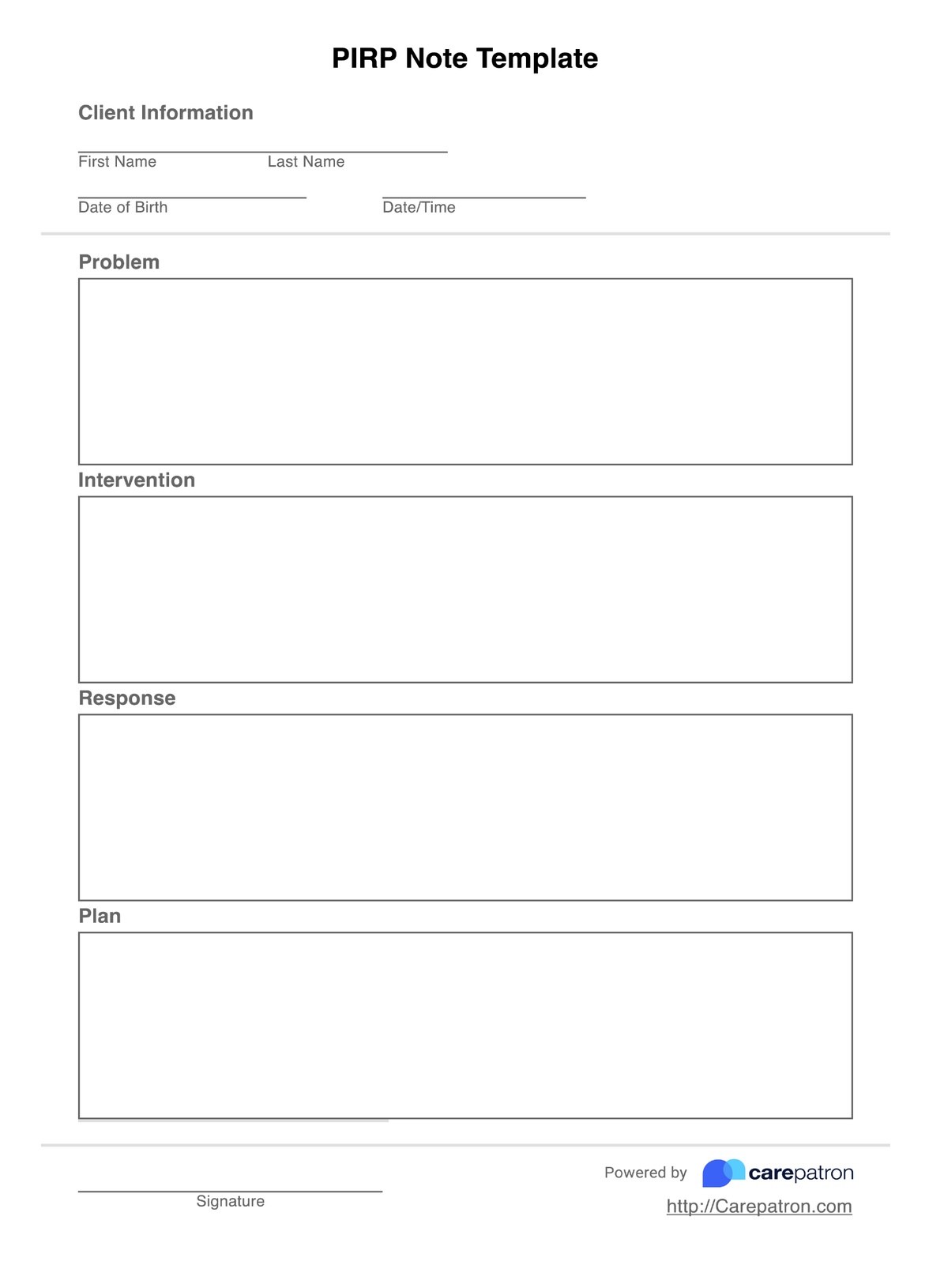Fall Prevention Checklist
Enhance patient safety with Carepatron's Fall Prevention Checklist app. Streamline assessments and improve care with our free guide.


What is a Fall Prevention Checklist Template?
In the healthcare industry, where ensuring patient safety is paramount, the Fall Prevention Checklist Template emerges as a crucial tool. Designed for healthcare professionals, this template is a proactive approach to minimize the risk of falls, particularly in vulnerable populations such as older people or those with mobility issues. It's not just a form; it's a commitment to patient safety and well-being.
A Fall Prevention Checklist Template is a structured resource that guides healthcare providers through a series of checks and balances to identify and mitigate fall risks. This includes assessing the patient's environment, physical condition, medication effects, and other factors that might contribute to falls. In settings where a single fall can have significant consequences, this checklist is a guardian, ensuring that all potential hazards are identified and addressed.
The strength of this template lies in its ability to transform routine observations into actionable insights. It's a tool that empowers healthcare professionals to take preventive measures, thereby enhancing patient safety and care quality. Each item on the checklist is a step towards creating a safer environment, reducing the likelihood of falls, and promoting patient independence.
Integrating the Fall Prevention Checklist into your practice is streamlined with practice management software from Carepatron. This software enhances the functionality of the checklist, allowing for digital record-keeping, easy updates, and efficient information sharing among the care team.
In summary, the Fall Prevention Checklist Template is an essential resource in healthcare, ensuring that patients are safeguarded against the risks of falls through meticulous assessment and proactive measures.
Fall Prevention Checklist Template
Fall Prevention Checklist Example
How do you use the Fall Prevention Checklist Template?
Effectively utilizing the Fall Prevention Checklist Template is critical to ensuring patient safety, particularly in reducing the risk of falls. Here’s a step-by-step guide:
Gather patient identification information
Start by filling in the patient's name, date of birth, room number, and ID number. This information is crucial for patient identification and record-keeping.
Conduct an environmental assessment
Evaluate the patient's environment for safety. Ensure adequate lighting, non-slip flooring, clear pathways, accessible call devices, and safe furniture arrangement. Each of these factors plays a significant role in preventing falls.
Perform a physical assessment
Assess the patient's mobility status, use of assistive devices, and any medication side effects that may affect balance and sensory impairments. A thorough physical assessment helps identify specific risks and needs related to the patient's physical condition.
Educate the patient
Provide the patient information on fall prevention strategies, call device use, appropriate footwear, and safe mobility practices. Education empowers patients to participate in their fall prevention.
Develop a follow-up plan
Plan for regular monitoring, make necessary adjustments to the care plan, ensure communication with the care team, review the plan with the patient and family, and document the findings in the patient's records.
The Fall Prevention Checklist Template is invaluable for healthcare professionals, ensuring a comprehensive fall risk assessment and prevention approach.
When would you use this form?
The Fall Prevention Checklist Template is an essential tool for healthcare professionals, designed for specific situations where assessing and mitigating fall risks is crucial. Here are vital scenarios where this template is handy:
- Initial patient assessment: Utilize this form when a new patient is admitted to your facility. It helps identify immediate fall risks based on the patient's health and environment.
- Post-surgery or procedure: Their fall risk may increase after a patient undergoes surgery or a medical process. Use the checklist to reassess their needs and adjust care plans accordingly.
- Following a fall incident: In the event of a fall, this checklist is crucial for evaluating what factors contributed to the fall and how to prevent future incidents.
- Regular risk assessments: For patients with ongoing care, this checklist helps monitor any changes in their condition or environment that might increase fall risks.
- Patient education sessions: When educating patients and their families about fall prevention, this checklist can guide the discussion of specific strategies and adjustments.
The Fall Prevention Checklist Template is a versatile and valuable resource in various healthcare settings, ensuring patient safety and proactive fall risk management.
What do the results mean?
Interpreting the results of the Fall Prevention Checklist is vital in providing effective patient care and ensuring safety. Here’s what these results typically indicate:
- Identification of high-risk areas: Positive checks in certain checklist areas highlight specific fall risks, allowing healthcare professionals to focus on those aspects more closely.
- Tailoring patient care plans: The results guide the customization of care plans to address identified risks, whether environmental adjustments, physical aids, or specific medical interventions.
- Measuring the effectiveness of interventions: Regular use of the checklist helps evaluate the effectiveness of implemented fall prevention strategies and make necessary adjustments.
The results from the Fall Prevention Checklist provide critical insights into a patient's risk factors for falls and guide healthcare professionals in implementing targeted interventions to enhance patient safety.
Research & evidence
The Fall Prevention Checklist Template is grounded in substantial research, highlighting its effectiveness in healthcare settings for enhancing patient safety. Here's a summary of the study and evidence:
- Improving patient safety: implementing falls prevention strategy in hospital: Spirgienė et al. emphasized the challenge of implementing fall prevention strategies in hospitals. They noted that falls are the most common adverse event reported in hospitals, underscoring the need for effective fall prevention programs. The study advocates for universal fall interventions and post-fall analyses, which align with the checklist's approach (Spirgienė et al.).
- Fall prevention through proactive toileting: Smith's project at an urban teaching hospital focused on fall prevention in a hematology-oncology and BMT unit. The study highlighted the physical and financial impacts of falls in hospitals, reinforcing the importance of proactive fall prevention measures, a vital component of the checklist (Smith).
- Patient Safety: A Systematic Review of the Literature with Evidence-based Measures to Improve Patient Safety in Healthcare Settings: Lungu's systematic review identified effective interventions for improving patient safety, including fall prevention. The study supports the checklist's role in minimizing medical errors and preventing patient harm (Lungu, 2023).
- Meta-analysis: multidisciplinary fall prevention strategies in the acute care inpatient population: Dibardino et al. conducted a meta-analysis on multidisciplinary fall prevention strategies, finding a significant but small effect on fall rates. This study highlights the complexity of fall prevention and the need for comprehensive systems like those in the checklist (Dibardino, Cohen, & Didwania, 2012).
References
Dibardino, D., Cohen, E., & Didwania, A. (2012). Meta-analysis: multidisciplinary fall prevention strategies in the acute care inpatient population. https://dx.doi.org/10.1002/jhm.1917.
Lungu, D. (2023). Patient Safety: A Systematic Review of the Literature with Evidence based Measures to Improve Patient Safety in Healthcare Settings. https://dx.doi.org/10.21522/tijar.2014.10.02.art003.
Smith, K. Fall Prevention Through Proactive Toileting.
Spirgienė, L., Bosch-Leertouwer, H., Watson, M., Spirgys, A., & Nadirbekova, G. Improving patient safety: implementation of falls prevention strategy in hospital.
Commonly asked questions
Carepatron ensures the highest level of security for patient data. The platform uses advanced encryption and complies with healthcare privacy regulations to protect sensitive information.
Yes, Carepatron allows for customizing the Fall Prevention Checklist to suit specific needs and preferences, ensuring that it aligns perfectly with your healthcare protocols.
Absolutely. Carepatron is designed for accessibility across multiple devices, including smartphones, tablets, and computers, enabling healthcare professionals to update and view checklists anytime, anywhere.


